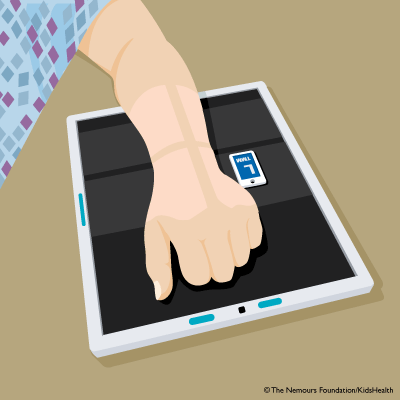- Home
- Parents Home
- Allergy Center
- Asthma Center
- Cancer Center
- Diabetes Center
- A to Z Dictionary
- Emotions & Behavior
- First Aid & Safety
- Food Allergy Center
- General Health
- Growth & Development
- Flu Center
- Heart Health
- Homework Help Center
- Infections
- Diseases & Conditions
- Nutrition & Fitness Center
- Play & Learn Center
- School & Family Life
- Pregnancy Center
- Newborn Center
- Q&A
- Recipes
- Sports Medicine Center
- Doctors & Hospitals
- Videos
- Para Padres
- Home
- Kids Home
- Asthma Center
- Cancer Center
- Movies & More
- Diabetes Center
- Getting Help
- Feelings
- Puberty & Growing Up
- Health Problems of Grown-Ups
- Health Problems
- Homework Center
- How the Body Works
- Illnesses & Injuries
- Nutrition & Fitness Center
- Recipes & Cooking
- Staying Healthy
- Stay Safe Center
- Relax & Unwind Center
- Q&A
- Heart Center
- Videos
- Staying Safe
- Kids' Medical Dictionary
- Para Niños
- Home
- Teens Home
- Asthma Center
- Be Your Best Self Center
- Cancer Center
- Diabetes Center
- Diseases & Conditions
- Drugs & Alcohol
- Expert Answers (Q&A)
- Flu Center
- Homework Help Center
- Infections
- Managing Your Medical Care
- Managing Your Weight
- Nutrition & Fitness Center
- Recipes
- Safety & First Aid
- School & Work
- Sexual Health
- Sports Center
- Stress & Coping Center
- Videos
- Your Body
- Your Mind
- Para Adolescentes
X-Ray Exam: Wrist
What's an X-Ray?
An X-ray is a safe and painless test that uses a small amount of radiation to make an image of bones, organs, and other parts of the body.
The X-ray image is black and white. Dense body parts, such as bones, block the passage of the X-ray beam through the body. These look white on the X-ray image. Softer body tissues, such as the skin and muscles, allow the X-ray beams to pass through them. They look darker on the image.
X-rays are commonly done in doctors’ offices, radiology departments, imaging centers, and dentists’ offices.
What's a Wrist X-Ray?
In a wrist X-ray, an X-ray machine sends a beam of radiation through the wrist, and an image is recorded on special X-ray film or a computer screen. This image shows the soft tissues and the ends of the forearm bones (radius and ulna) and eight small wrist bones (carpal bones).
An X-ray technician will take pictures of the wrist:
- from the back with the palm facing down (posteroanterior, or PA, view)
- from the side (lateral view, or lat)
- at an angle (oblique view)
Occasionally doctors request an X-ray of the opposite wrist for comparison.
Wrist X-rays are done while a child sits and places their hand and wrist on the table. They should stay still for 2–3 seconds while each X-ray is taken so the images are clear. If an image is blurred, the X-ray technician might take another one.

Why Are Wrist X-Rays Done?
A wrist X-ray can help doctors find the cause of pain, tenderness, or swelling, or show deformities of the wrist joint. It can also show broken bones or dislocated joints. After a broken bone has been set, an X-ray can show if the bones are aligned and if they have healed properly.
An X-ray can help doctors plan surgery, when needed, and check the results after it. It also can help detect cysts, later-stage infections, tumors, and other diseases in the bones. A wrist X-ray may also be done as part of a bone age study, which can help doctors diagnose disorders that affect proper growth.
What if I Have Questions?
If you have questions about the wrist X-ray or what the results mean, talk to your doctor.

© 1995- The Nemours Foundation. KidsHealth® is a registered trademark of The Nemours Foundation. All rights reserved.
Images sourced by The Nemours Foundation and Getty Images.
